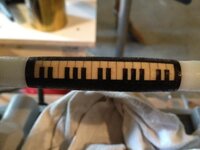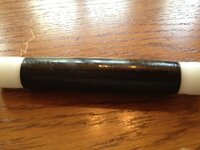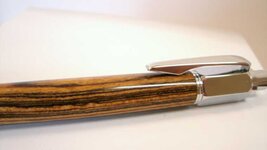wortmanb
Member
I've got a Kallenshaan blank (blackwood with holly inserts) that is absolutely gorgeous. It turned quite nicely, but now that I'm trying to give it a CA finish I'm having all sorts of trouble. I get spots where, after sanding, there's just no finish at all. These might be high spots, because I can't sand this kit (due to possible contamination of the holly with blackwood dust) but I'm not convinced.
Lately a number of my attempts to use CA have been ... frustrating. The cure is really slow when using BLO & medium CA (Stickfast brand, from Woodcraft). The finish gets rougher as I add layers and I invariably have to use a skew or my Woodchuck Pen Pro to knock it down before sanding.
It's enough to make me swear off wood pens altogether!
Any ideas for how to finish this project? It's for my sister, so I really want to get it right....
Lately a number of my attempts to use CA have been ... frustrating. The cure is really slow when using BLO & medium CA (Stickfast brand, from Woodcraft). The finish gets rougher as I add layers and I invariably have to use a skew or my Woodchuck Pen Pro to knock it down before sanding.
It's enough to make me swear off wood pens altogether!
Any ideas for how to finish this project? It's for my sister, so I really want to get it right....



